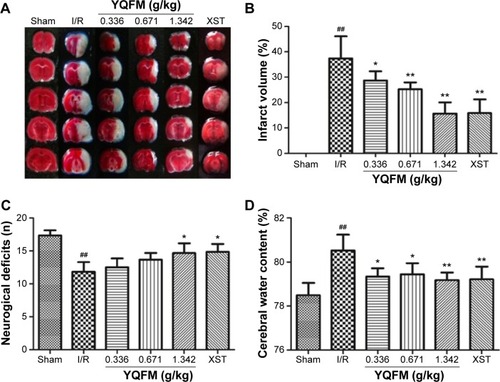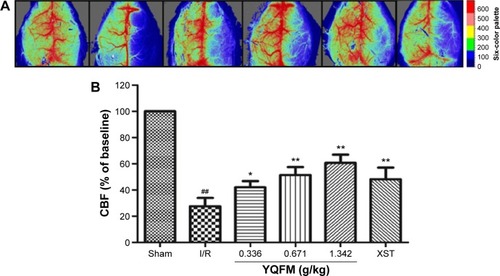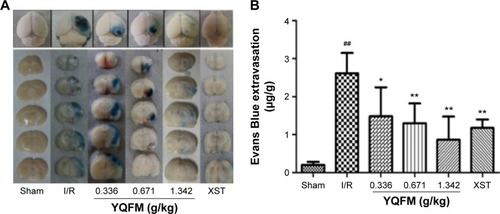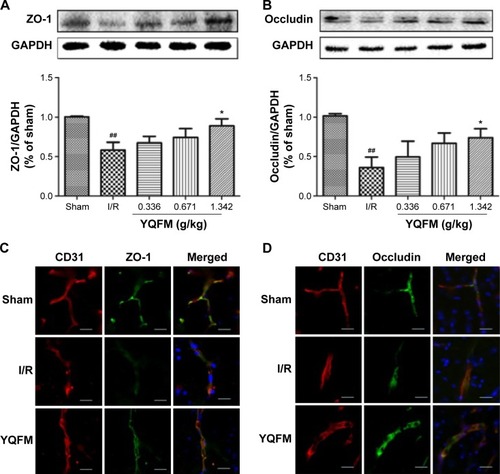Figures & data
Figure 1 Chromatogram profile of YQFM.
Abbreviation: YQFM, YiQiFuMai powder injection.

Figure 2 Effects of YQFM on brain injury in mice with cerebral I/R.
Abbreviations: I/R, ischemia–reperfusion; SD, standard deviation; XST, XueShuanTong injection; YQFM, YiQiFuMai powder injection.

Figure 3 Effect of YQFM on regional cerebral blood flow in mice with cerebral I/R.
Abbreviations: CBF, cerebral blood flow; I/R, ischemia–reperfusion; SD, standard deviation; XST, XueShuanTong injection; YQFM, YiQiFuMai powder injection.

Figure 4 Effect of YQFM on blood–brain barrier permeability in mice with cerebral I/R.
Abbreviations: EB, Evans Blue; I/R, ischemia–reperfusion; SD, standard deviation; XST, XueShuanTong injection; YQFM, YiQiFuMai powder injection.

Figure 5 Effect of YQFM on histopathological changes of brain sections in mice with cerebral I/R.
Abbreviations: 18F-FDG, 18F-fluorodeoxyglucose; I/R, ischemia–reperfusion; PET, positron emission tomography; SD, standard deviation; YQFM, YiQiFuMai powder injection.

Figure 6 Effect of YQFM on the expression of tight junction proteins in mice with cerebral I/R.
Abbreviations: GAPDH, glyceraldehyde phosphate dehydrogenase; I/R, ischemia–reperfusion; PET, positron emission tomography; SD, standard deviation; YQFM, YiQiFuMai powder injection; ZO-1, zona occludens-1.

